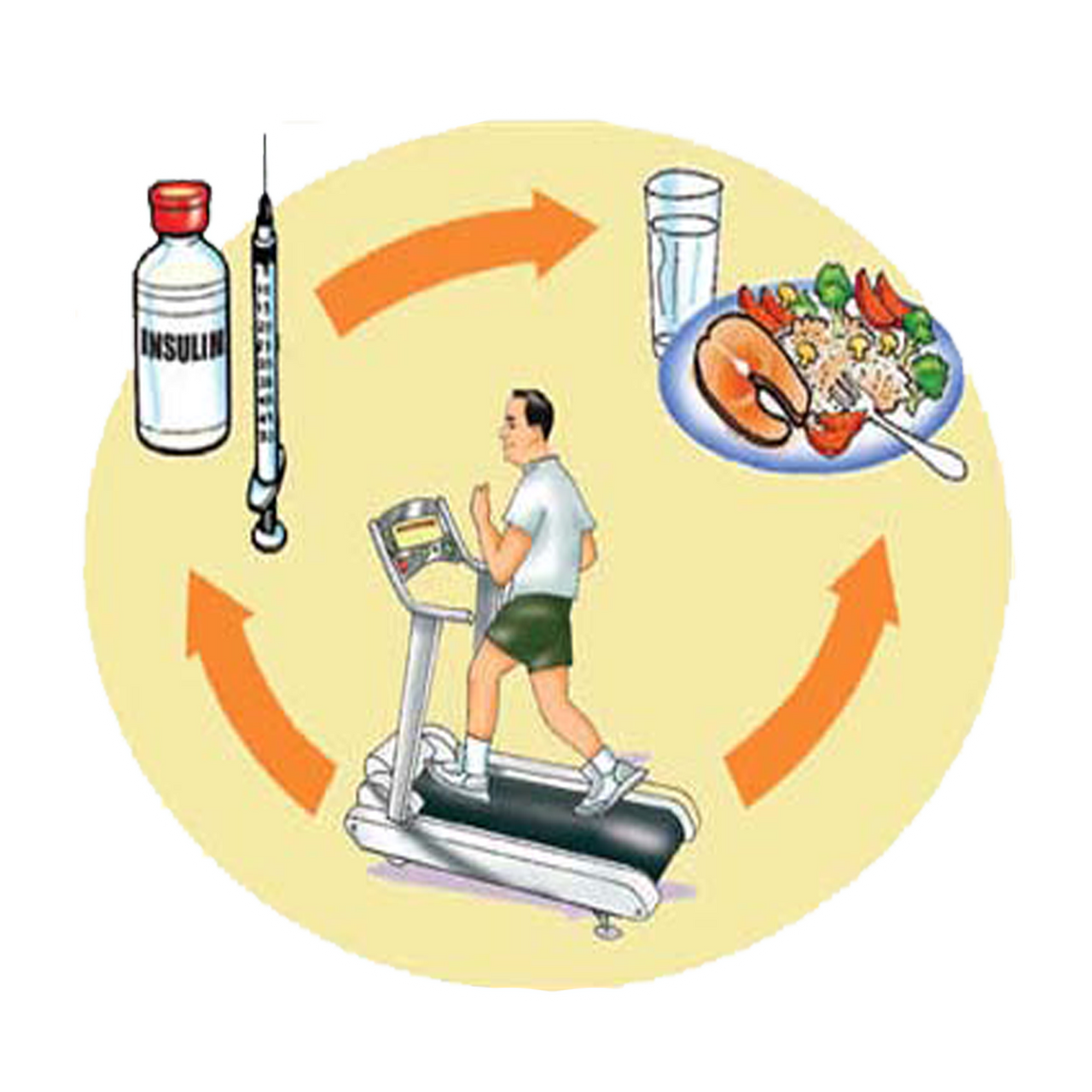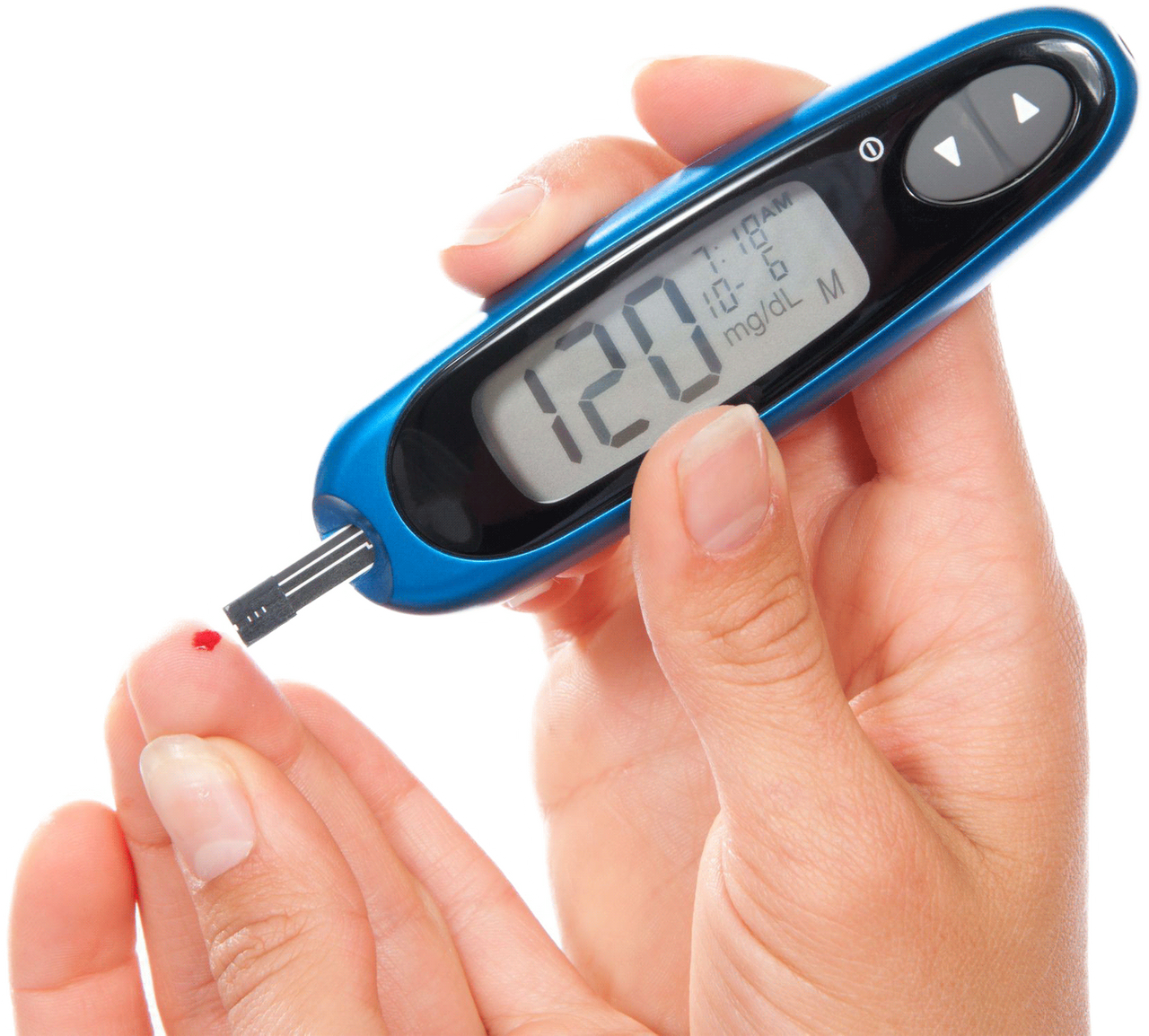Lo primero que tenemos que saber es que la Diabetes Mellitus es una enfermedad crónica que se origina cuando el páncreas no produce insulina suficiente y que afecta la forma en que el cuerpo utiliza la glucosa haciendo que esta se acumule en la sangre. Sino mantenemos bajo control la glucosa en sangre puede provocar problemas graves como niveles elevados de glucosas (hiperglucemia) que si persiste puede causar riesgos de salud a largo plazo, como el desarrollo de arterias obstruidas y endurecidas, accidentes cerebrovascular, enfermedades cardíacas, hipertension arterial, insuficiencia renal.
Existen dos tipos de diabetes fundamentales; La Diabetes Mellitus tipo 1 y La Diabetes Mellitus tipo 2.
La Diabetes Mellitus tipo 1
Suele manifestarse a temprana edad, es decir en la infancia o juventud por una deficiencia total de insulina, lo cual ocasiona la Insulinodependencia.
La Diabetes Mellitus tipo 2
Es de mayor prevalencia en adultos, puede ser hereditaria esta conectada a la resistencia a la insulina, y asociada al hígado graso, y se puede prevenir con una alimentación sana y haciendo ejercicios diariamente. por eso es importante estar alerta a cualquier síntoma y visitar al medico y hacer los exámenes de rigor para evitar complicaciones a futuro.
The first thing to know is that Diabetes Mellitus is a chronic disease that originates when the pancreas does not produce enough insulin and affects the way the body uses glucose, causing it to accumulate in the blood. If blood glucose is not kept under control it can cause serious problems such as high blood glucose levels (hyperglycemia) which if persistent can cause long-term health risks such as the development of clogged and hardened arteries, strokes, heart disease, high blood pressure, kidney failure.
There are two main types of diabetes; Diabetes Mellitus type 1 and Diabetes Mellitus type 2.Diabetes Mellitus type 1
usually manifests itself at an early age, i.e. in childhood or youth due to a total insulin deficiency, which causes insulin dependence.
Diabetes Mellitus type 2
Is more prevalent in adults, can be hereditary, is connected to insulin resistance, and associated with fatty liver, and can be prevented with a healthy diet and daily exercise, so it is important to be alert to any symptoms and visit the doctor and make the necessary tests to avoid complications in the future.

La diferencia en las causas que las provocan son:
Los síntomas, las características ,el tratamiento, y la edad de las personas a las que afecta. En cualquiera de los casos anteriores ademas del tratamiento con medicamentos una dieta sana, hacer ejercicios o practicar algún deporte son de suma importancia.
Un plan de alimentación saludable ayudará a controlar los niveles de azúcar en la sangre, implica consumir alimentos de alto valor nutritivo, con bajo contenido de grasas y calorías y en cantidades moderadas , con horarios habituales , el consumo de carbohidratos deben estar vigilados porque estos se descomponen en glucosa, es importante llevar un registro de la cantidad de carbohidratos en cada comida, con la ayuda de un nutricionista que te enseñara a medir las porciones de alimentos y te orientara sobre que tipo de alimento debes consumir y las cantidades adecuadas. Los planes de dieta serán distribuidos según la necesidad del paciente. Las personas con diabetes deben asegurarse de que haya un equilibrio entre sus alimentos, insulina, medicamentos orales y ejercicios para ayudar a controlar su nivel de glucosa. Tratando de mantener los niveles de azúcar adecuados para evitar tanto la hipoglucemia como la hiperglicemia.
The difference in the causes that provoke them are:
the symptoms, the characteristics, the treatment, and the age of the people affected. In any of the above cases, in addition to treatment with medication, a healthy diet, exercise or sports are of utmost importance.
A healthy eating plan will help control blood sugar levels, involves eating foods of high nutritional value, low in fat and calories and in moderate amounts, with regular schedules, the consumption of carbohydrates should be monitored because these are broken down into glucose, it is important to keep track of the amount of carbohydrates at each meal, with the help of a nutritionist who will teach you to measure the portions of food and guide you on what kind of food you should eat and the right amounts. The diet plans will be distributed according to the patient's needs. People with diabetes should make sure there is a balance between their food, insulin, oral medications and exercise to help control their glucose level. Trying to maintain adequate sugar levels to avoid both hypoglycemia and hyperglycemia.

La alimentación de un paciente con diabetes debe incluir:
Alimentos ricos en fibra, mucha ingesta de frutas, y vegetales, carnes magras, aves de corral, pescados, cereales integrales, productos lácteos sin grasa, granos integrales.
Las verduras como la zanahoria, el brocoli, el calabacin, el repollo, espinaca, tomate, pepino,lechuga,champiñones,judías verdes, entre otros ayudan a controlar los niveles de azúcar en la sangre , aportan nutrientes y vitaminas A, B, C , y son ricos en fibras, también se recomiendan las hojas de color verde oscuro, cítricos como la naranja, la lima, el limón,pescado con alto contenido de ácidos grasos Omega 3, granos enteros , nueces , leche y yogurt descremado etc.
Lo ideal para una persona que padece de diabetes es comer pequeñas porciones de alimento cada tres horas realizando tres comidas principales y de dos a tres meriendas (a media mañana, a media tarde, y antes de dormir) sin que esta ultima afecte su descanso a la hora de dormir.
The diet of a patient with diabetes should include:
Foods rich in fiber, plenty of fruits and vegetables, lean meats, poultry, fish, whole grains, fat-free dairy products, whole grains.
Vegetables such as carrots, broccoli, broccoli, zucchini, cabbage, spinach, tomato, cucumber, lettuce, mushrooms, green beans, among others help control blood sugar levels, provide nutrients and vitamins A, B, C, and are rich in fiber, C, and are rich in fiber, also recommended are dark green leaves, citrus fruits such as orange, lime, lemon, fish with high content of Omega 3 fatty acids, whole grains, nuts, milk and low-fat yogurt etc..
The ideal for a person suffering from diabetes is to eat small portions of food every three hours making three main meals and two to three snacks (mid-morning, mid-afternoon, and before bedtime) without the latter affecting your rest at bedtime.
Una vez mas espero que les sea de gran ayuda e interés este Posts./ Once again, I hope this post will be of great help and interest to you.
Fuentes citadas:
https://www.tuasaude.com/es/que-puede-comer-un-diabetico/
Gracias por leerme./Thanks for reading me.
Originally posted here: https://hive.blog/hive-148441/@kleimarieli03/esp-eng-cuidados-en-la-alimentacion-de-pacientes-con-diabetes-care-in-feeding-patients-with-diabetes


No comments:
Post a Comment